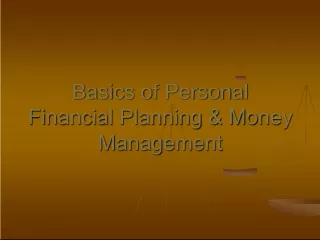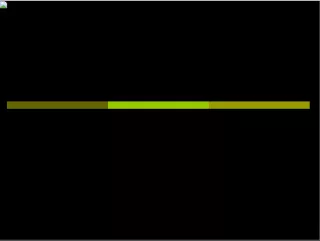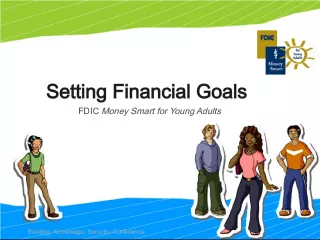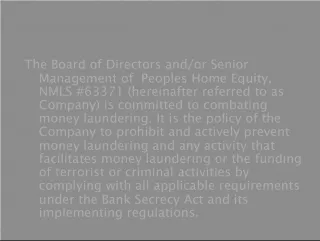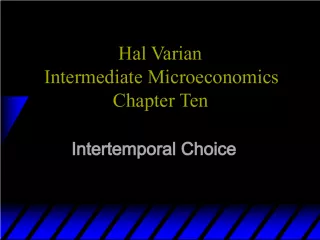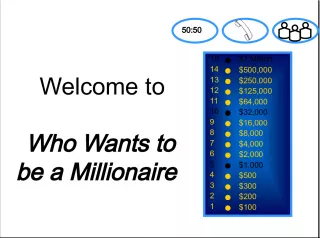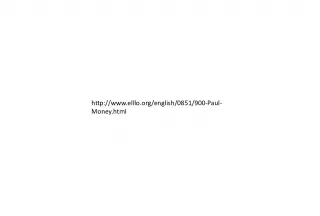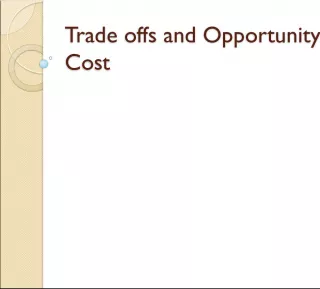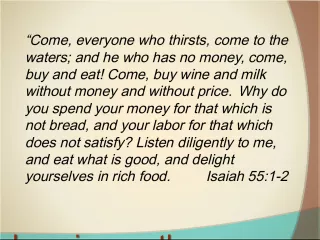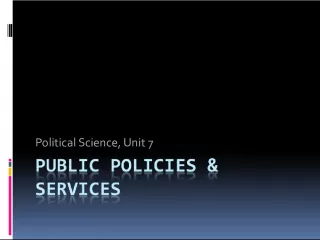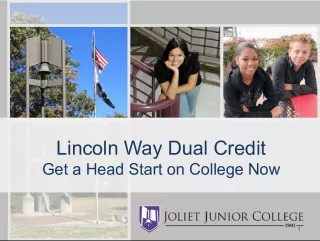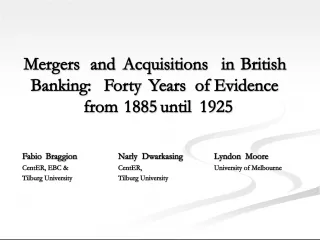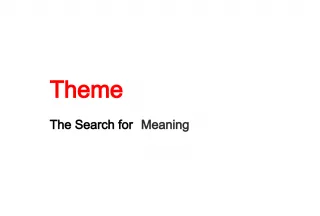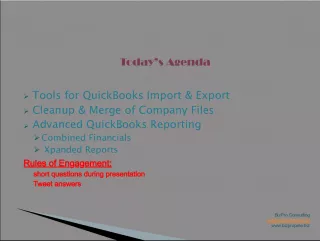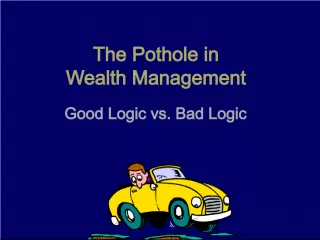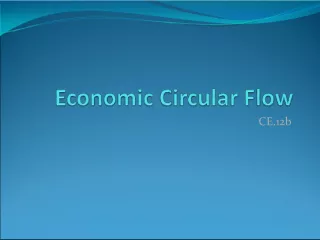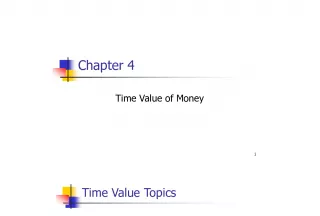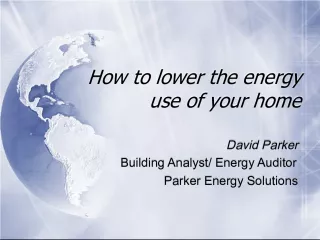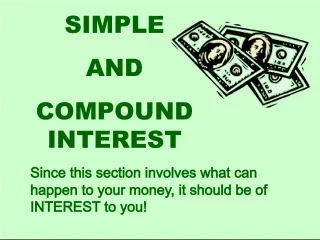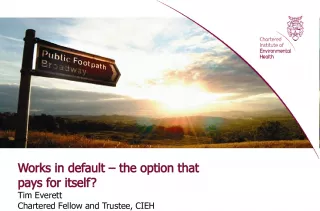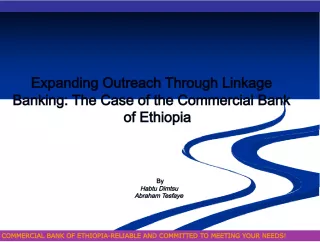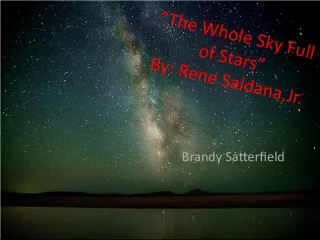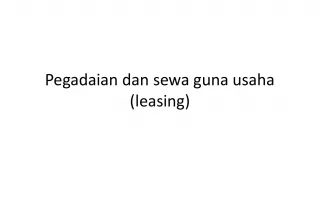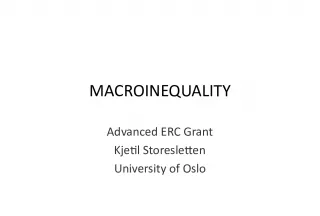Money Basics: Microeconomics, Macroeconomics, Money and Banking
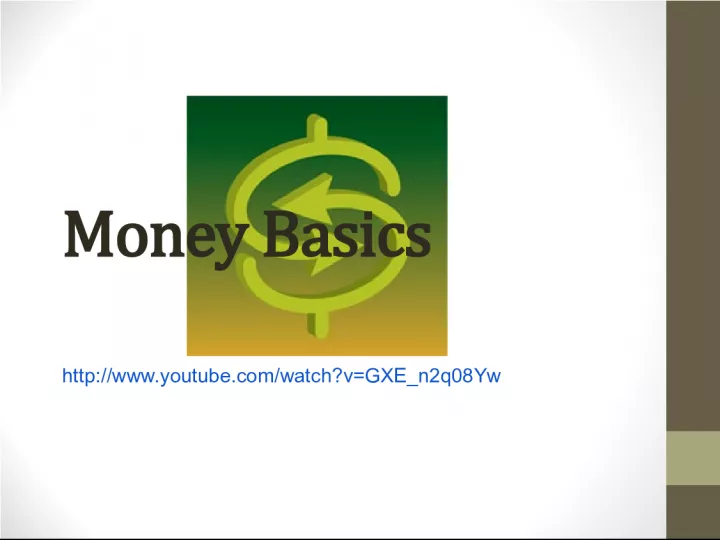

In this video, we will delve into the basics of economics, specifically microeconomics and macroeconomics. Microeconomics studies individual parts of the economy
- Uploaded on | 6 Views
-
 dante
dante
About Money Basics: Microeconomics, Macroeconomics, Money and Banking
PowerPoint presentation about 'Money Basics: Microeconomics, Macroeconomics, Money and Banking'. This presentation describes the topic on In this video, we will delve into the basics of economics, specifically microeconomics and macroeconomics. Microeconomics studies individual parts of the economy. The key topics included in this slideshow are . Download this presentation absolutely free.
Presentation Transcript
Slide1Money Basicshttp://www.youtube.com/watch?v=GXE_n2q08Yw
Slide2Microeconomics/Macroeconomics• These are the two basic divisions of the study of economics. • Micro studies the individual parts of the economy – one product, one industry, individual demand, etc. • Macro studies the entire economy at one time – unemployment rates, inflation and prices, economic growth a nd international topics.
Slide3Money and Banking• Money and Banking studies are included in Macroeconomics.
Slide4Before there was money…• People traded goods and services to get what they needed or wanted.
Slide5Money replaced the ancient system of…• Barter • Barter is the system where people trade one thing for another without the use of money.
Slide6Barter still works fine, but hadlimitations: • Problems: • For one thing, you can’t always find the person who wants what you have and has what you want. “Coincidence of Wants”
Slide7Problems of Barter…• For another, you can’t know what “things”, or commodities are worth in exchange. “Valuation problem”
Slide8Problems of Barter…• And, Commodities are often perishable, so saving is an issue. “Savings problem”
Slide9Problems of Barter…• Also, Credit can be difficult or impossible.
Slide10Money solves thoseproblems
Slide11Money’s USES are:• Medium of Exchange : It works as a go- between to make trades possible.
Slide12•Measure of Value- Money allows items to be evaluated in terms of money.
Slide13•Store of Value : It allows saving for the future.
Slide14•Basis for Credit : It allows a payments and credit system to be established in money units.
Slide15Commodity Money• Often a particular item or items evolves into being used as “money”…
Slide16Commodity Money• Wheat, cattle, certain metals, shells… • All these have been “money” in the past.
Slide17Commodity Money• Today, Commodity Money springs up whenever there is a problem with the basic money supply. • Cigarettes, alcoholic beverages, precious metals might become “money”. • Elementary school cafeterias have commodity money spring up…pudding, cookies, candy, salt?
Slide18To be a “money”• Something must be • Divisible • Portable • Acceptable
Slide19Gold• U.S. Money is NOT backed by Gold. • It is “backed” by the credit of the U.S. Government.
Slide20•Gold “backed” our money until 1971 when Nixon took us off the gold standard for international trade because we were losing gold to other countries through import payments.
Slide21It once was backed by gold
Slide22Assorted gold coins.
Slide23•Americans have not had gold currency since before 1933 when Franklin Roosevelt “called in” the gold and changed the international value of the dollar.)
Slide24•So why does the U.S. own gold still? • It is officially part of the “treasure” of the U.S.
Slide25FORMS of MONEY• Coins, • Currency, and • Checkbook Money (Demand Deposits). • http://www.bankofcanada.ca/banknotes/ bank-note-series/polymer/
Slide26Forms of Money• Of these three, Checkbook money is by far most important. – about 70% of the money supply, but the number of checks used is dwindling fast. Instead, demand deposit accounts are accessed electronically. • Debit cards, electronic payments, smart cards, “plastic” money, etc are based mainly on bank deposits.
Slide27Plastic?• No- “Plastic” is technically not money, as it either postpones payment in one of the 3 forms (credit card), or accesses your checkbook money (debit card)
Slide28•Even use of cash has declined since electronic payment methods have expanded.
Slide29Payments by smart phones…• http://www.google.com/wallet/ • https://www.youtube.com/watch?v=jke7c1B5QEM • Are these “forms” of money? Not really because the money comes out of your bank or online account.
Slide30Smartphone payments…• http://www.hongkiat.com/blog/smartphones-into-creditcard- readers/
Slide31Bitcoin – a decentralized currency• Bitcoin i Bitcoin is a peer-to-peer payment system and digital currency introduced as open source software . It is a cryptocurrency , so-called because it uses cryptography to control the creation and transfer of money. [5] http://en.wikipedia.org/wiki/Bitcoin • http://vimeo.com/63502573 • http://www.bostonmagazine.com/news/blog/2014/02/20/lib erty-teller-bitcoin-atm-boston/
Slide32So…How does a bank “work”?• Banks are profit-making businesses that take in depositors money and give out loans based on the same deposits. • When a banks give a loan, they “create” money because the depositor can withdraw their deposits at most any time, and the loan recipient can also withdraw the loan, thus creating money.
Slide33How a bank works…
Slide34Fractional Reserve Banking• So…the bank holds back a “fraction” of their deposits on reserve to handle day to day needs of the business. • The Federal Reserve sets the “reserve requirement” percentage to help control the size of the money supply.
Slide35Two events can threaten abank • 1. A Bank “Run”- depositors ask to have their account turned to cash or close their accounts too quickly, often in response to rumors or “panics”. This is happening in Greece and possibly Spain as we speak (2012) • 2. The loans can “go bad” and not be repaid. This is more disastrous for a bank, as the basis for the loans is lost. This is where the FDIC will step in.
Slide36It’s a Wonderful Life• The film, It’s a Wonderful Life, from 1946, showed a bank run in it. • http://www.youtube.com/watch?v=lbwjS9iJ2Sw • How did George get the run stopped?
Slide37Loans going “bad”…• Hard times are the worst- borrowers lose jobs or cannot raise payment money. The bank must foreclose on any asset given as collateral.
